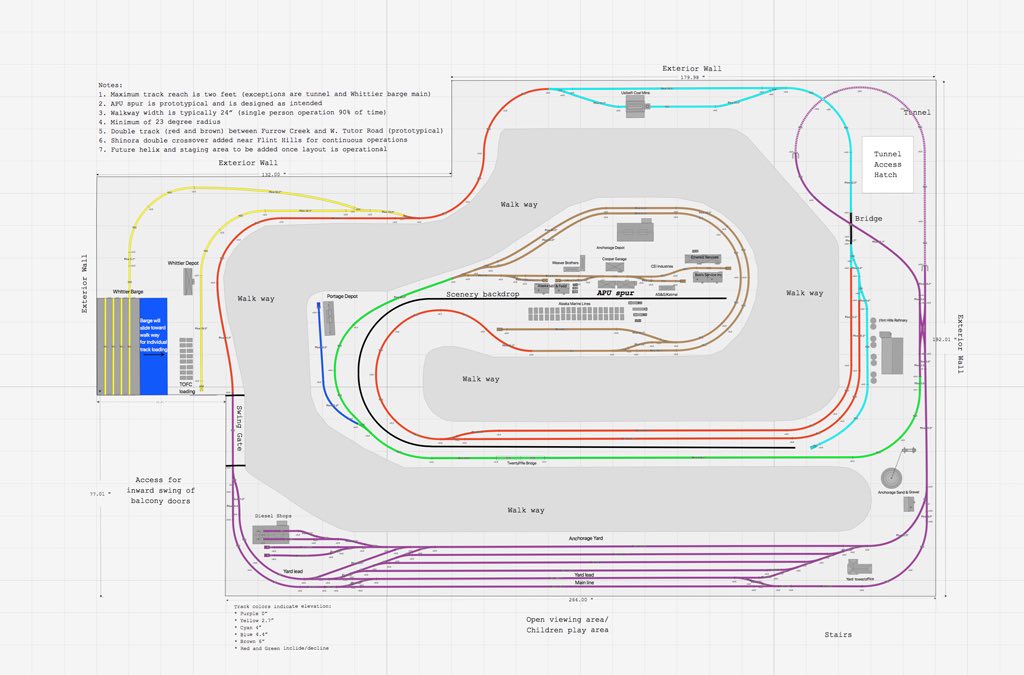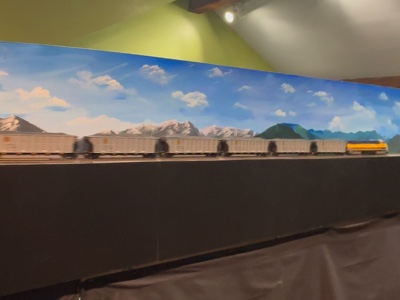
|

|

|
| Video: Heading south with a heaping load of coal from the Usibelli mine, 181S passes through Anchorage at the diesel shop. |
Video: Railfans were delighted to capture on video 181S Anchorage to Seward coal train crossing over top of a Maintenance of Way train at Canyon. |
Video: Locomotive engineer Frank Dewey puts the SD70MACs in notch 8 to battle the elevation increase into Eppley's curve. |

|

|

|
| Video: 181S crawls through the divide at Triple Peaks mountain which the Maintenance of Way train crosses under the bridge at Canyon. |
Video: A Maintenance of Way train passes along the main near Rudd Spur where a forestry team removes a long dead pine tree. |
Video: 181S slithers through the cut at Canyon just as the Maintenance of Way train crosses the bridge heading to Portage. |

|
 |
 |
| Video: At train night, the Eppley Shops released the second set of new hoppers. Unfortunately, one the hoppers was derailing. Inspections revealed the wheel size was 36" while 33" is required. The shop's stock of 33" wheels was depleted so John needs to order more. |
Additionally, the new hoppers are too light. NMRA weight standards are 1 ounce plus an ounce for each 1/2" of car length. John gave Rick some weight sheets he created. Rick cut them to the proper weight and fit. |
Now both cars weigh in at approximately 4 ounces. |
 |
 |
 |
| Video: Test locomotive F7 #1512 pulled the new 7500 series hoppers past Jackie's flower field and eventually into the Anchorage yard. These new hoppers show exceptionally smooth running even through the |
Video: F7 #1512 pulls the new hoppers along with a freight consist downgrade through TwentyMile. |
Video: The Eppley Shops put #3015 back in service. The original problem began with the conversion to RailPro. Due to electrical conductivity, the motor couldn't be mounted to the frame so a layer of electrical tape was applied. This caused slight misalignment between the motor and the drive shaft. Therefore, four screws were used to mount the motor securely and the holes in the spacers were enlarged. The result was a perfectly aligned drive shaft. |
| |
 |
|
| |
Plat mapping had begun in the APU region. The long building cut out is the Anchorage depot. Across the street is Eppley's Cycle Shop, Koole's Bike Shop, Mini Cooper Dealership and Dairy Queen. Stay tuned! |
|
































